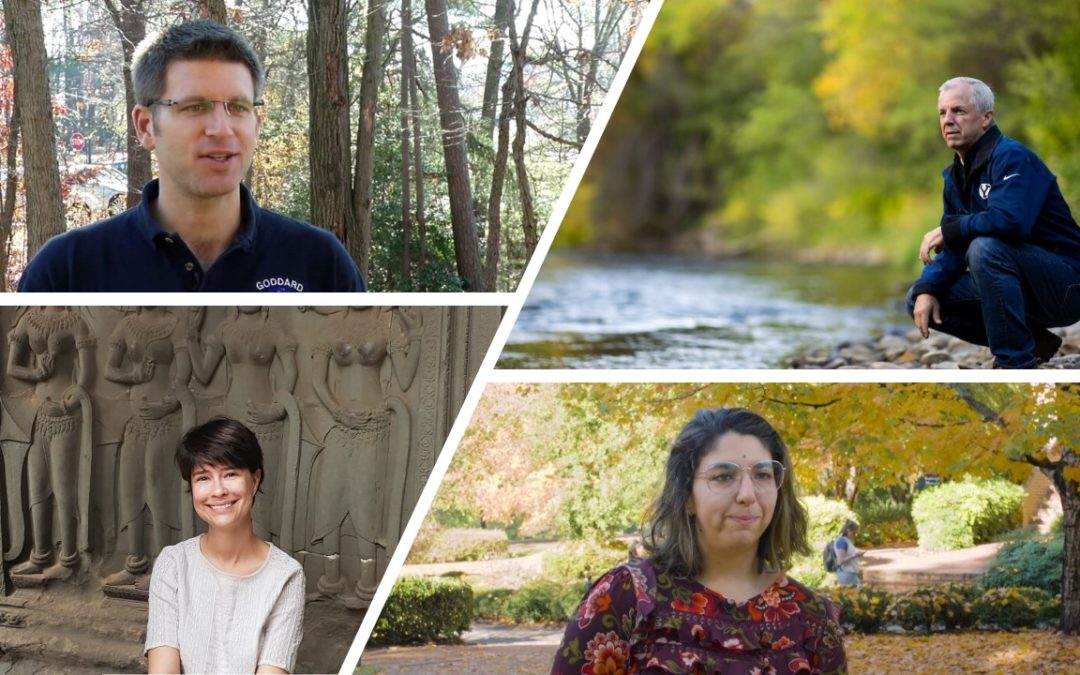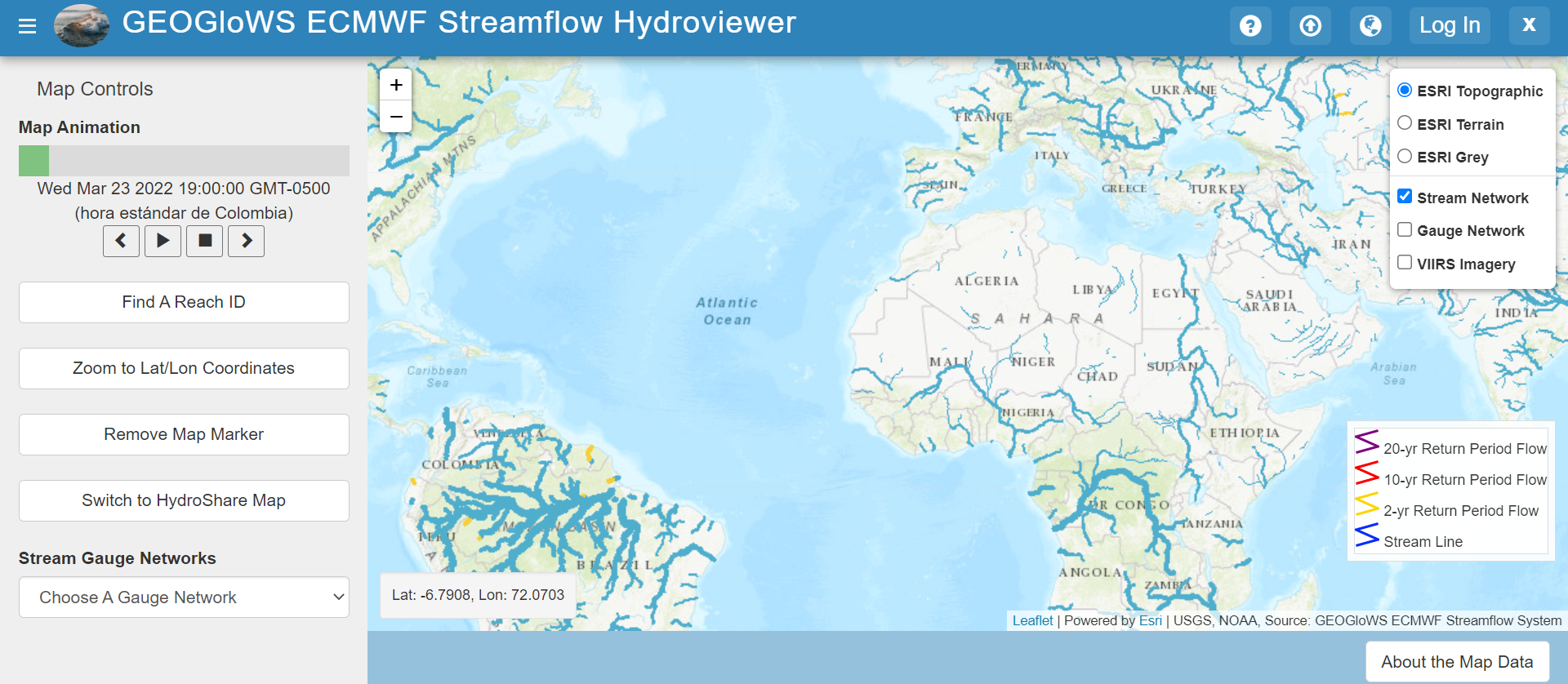In their last year of collaboration with SERVIR-Amazonia, the first cohort of Applied Science Teams (ASTs) aims to complete services with partners in the Amazon. ASTs support SERVIR in developing science applications for international development through the use of Earth observations. Team members conduct applications research, development, and testing, and participate in capacity building. In 2018, NASA selected 20 finalists from 94 proposals based on a panel review and the needs identified in thematic service areas of five regional hubs in Eastern and Southern Africa, Hindu Kush-Himalaya, Lower Mekong, West Africa, and the Amazon.
In this blog, we provide more information on the services developed, partners in SERVIR-Amazonia countries, and prospects of service delivery.
Forecasting Seasonal to Sub-Seasonal Fire and Agricultural Risk from Drought in Amazonia
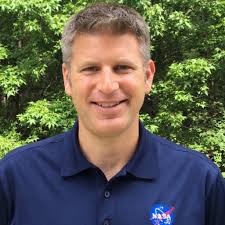
Douglas Morton, Goddard Space Flight Center
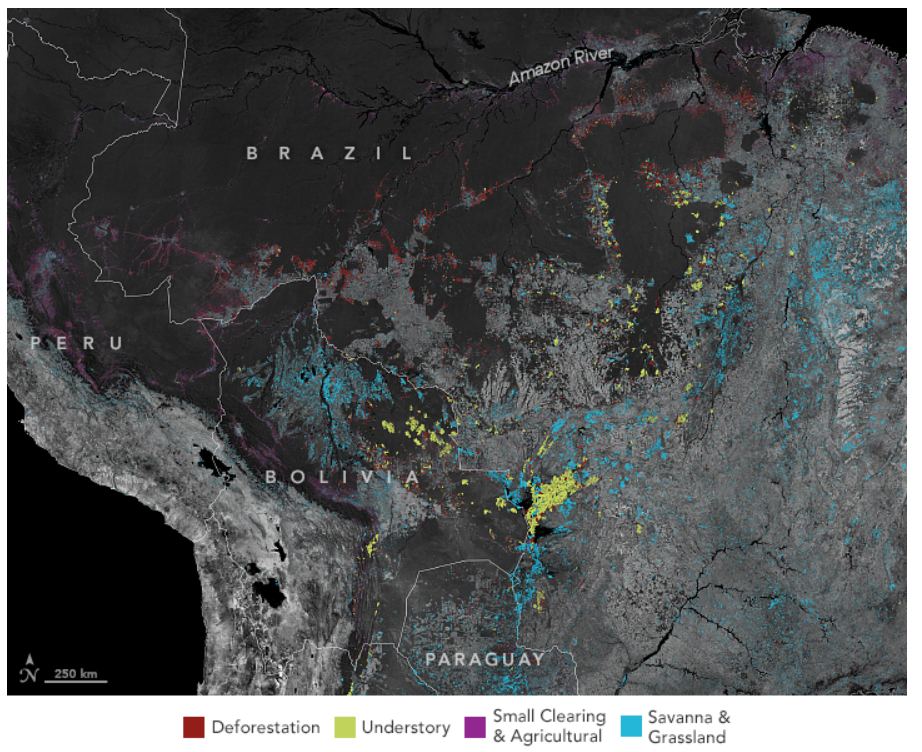
The service: The service provides information for mitigating the negative impacts of drought and fire on forest and agriculture in the Amazon basin, evaluating drought conditions at temporal and spatial resolution to predict fire vulnerability. The service detects small and understory fires using several satellite platforms, including VIIRS and MODIS, with a focus on providing information products for improved management. These products, such as wildfire patterns and association with land use change events, fill a current gap by detecting fires that current global algorithms often miss. The service helps stakeholders characterize fires and quantify their negative impacts on ecosystem services as well as use fire forecasting models to develop dry season metrics and predict how these metrics change over time.
Partnerships: The service is part of the work plans with SERVIR-Amazonia partners in Brazil, namely the Brazilian States of SEMAPI-Acre, FEMARH-Roraima, SEMAS-Pará, SEMA-Mato Grosso, and SEDAM-Rondônia, as well as the governmental Amazon Protection Center CENSIPAM. Launch events are planned to take place in the second semester of 2022.
Check out these tools:
In the news:
- Fires Raged in the Amazon Again in 2020
- Game changer: NASA data tool could revolutionize Amazon fire analysis
- Pandemia, Fuegos y Deforestación en la Amazonía: Desafíos y herramientas de monitoreo y análisis geoespaciales
- Queimadas em MT atingiram área onze vezes maior do que a cidade de SP em 2020
- Satélites da Nasa mostram que maioria das queimadas na Amazônia tem origem no desmatamento
Improving Resiliency and Reducing Risk of Extreme Hydrologic Events through Application of Earth Observations and In Situ Monitoring Information
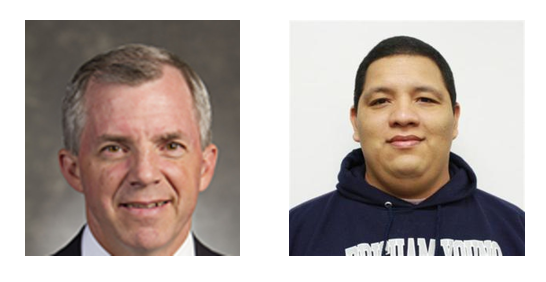
Jim Nelson, Brigham Young University / Jorge Luis Sánchez, Alliance Bioversity – CIAT
The service: The service provides stakeholders in the Amazon Basin region with improved flood forecasting ability, including more accurate information about timing, magnitude and impact, to increase their understanding of risks and support greater resiliency to flood disasters. The service will allow stakeholders to investigate forecast-based financing methods, which will increase their ability to prepare and respond to flood disasters. Furthermore, the hydroinformatics tools can train stakeholders to understand past river flooding patterns and how the hydrological basin is integrated beyond political borders.
Check out the tool: The GEOGloWS ECMWF Streamflow Service. The team intends to contribute not only its own scientific expertise in flood impact analysis, but extend Hub networks and SERVIR thematic teams by developing geospatial decision-making web apps using the free and open-source software Tethys Platform.
- GEOGloWS Technical Overview Web Page: https://geoglows.ecmwf.int/ (About page, and other publications linked there)
- GEOGloWS model portal: https://apps.geoglows.org/apps/
- SERVIR Amazonia Portal: http://servir-amazonia.eastus.cloudapp.azure.com/apps/
- IDEAM Portal: http://tethys-ideam.westus2.cloudapp.azure.com/apps/
- Senamhi Portal: https://senamhi.westus2.cloudapp.azure.com/apps
Partnerships: Nelson’s team at BYU’s Hydroinformatics Lab has several years of experience working in the region, with important stakeholders including Colombia’s Instituto de Hidrología, Meteorología y Estudios Ambientales (IDEAM), Peru’s and Ecuador’s Servicio Nacional de Meteorología e Hidrología (SENAMHI and INAMHI respectively), and Brazil’s disaster management agency Centro Nacional de Monitoramento e Alertas de Desastres Naturais (CEMADEN). Nelson y Sánchez are actively strengthening the capacities of those partners in the usage of the tools and data. Partner visits are planned during the first semester of 2022 and service launch events later this year.
In the news:
● Nueva alianza de SERVIR-Amazonia en Perú con El Servicio Nacional de Meteorología e Hidrología
● BYU software predicts the rise and fall of every river on earth; agencies like NASA are using it to save lives worldwide
● Capacitación para el monitoreo y alertas hidrológicas en todo el Ecuador
● Professor Jim Nelson – Predicting Disasters Using Global Water Intelligence
● Predicting Disasters Using Global Water Intelligence
● Streamflow Forecasting at BYU (video)
● The Hydroinformatics Lab of the Brigham Young University Civil & Environmental Engineering Department (video)
● GEOGloWS ECMWF Streamflow Service | Forecasting streamflows around the world (video, trailer)
Unlocking the Power of Active Remote Sensing for Ecosystem Services Modeling in the Amazon’s Forest-Agriculture Interface
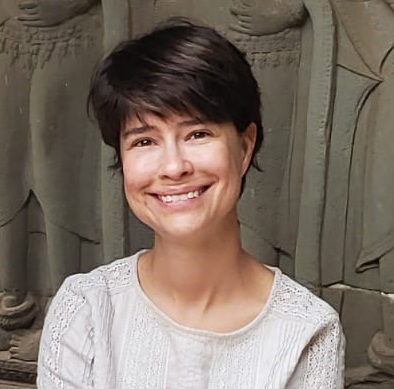
Naiara Pinto, Jet Propulsion Laboratory
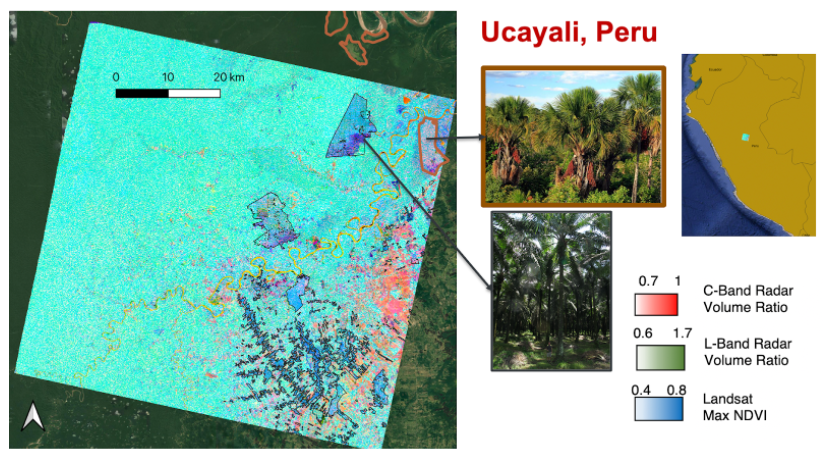
Tool under development: An online platform that allows non-experts to visualize satellite imagery as accurate plantation maps and conduct data exploration with ground data organized in a public page.
The service: The service provides accurate maps for stakeholders and decision-makers to understand the policy and economic scenarios that tip agricultural production systems towards deforestation, particularly due to palm oil and cocoa production. The automated mapping of perennial plant crops overcomes difficulties in interpretation due to the spectral similarity, both with the native forest and with the secondary vegetation. The team involves end-users in validating satellite-based data from SAR and Lidar observations to address local conservation and economic issues. For example, based on this information decision-makers can provide incentives for local farmers to invest in sustainable crop intensification. Local farmers can apply this information to make optimum use of degraded lands as opposed to expanding into high-biomass, high-conservation value forests. Furthermore, farmers can use data from the tool to participate in certification programs that will help them get better returns for their products in international markets.
Partnerships: The stakeholders are farmers enrolled in sustainable landscape initiatives as well as decision-makers in NGOs and governments that support sustainable agriculture practices. The project team leverages subnational initiatives, with partners such as Alianza Cacao, MINAM, MINAGRI in Peru and EMBRAPA Amazônia Oriental in Brazil, producing lessons and workflows that can be adapted to other Amazonian sites.
Quantifying the Effects of Forest Cover Changes on Provisioning and Regulating Ecosystem Services in the Southwestern Amazon
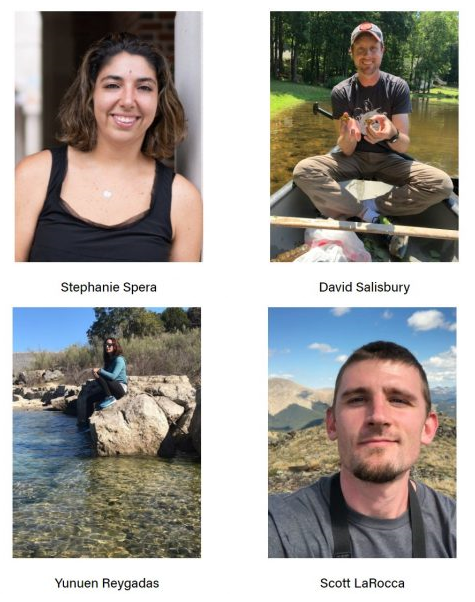
Stephanie Spera and her team, University of Richmond
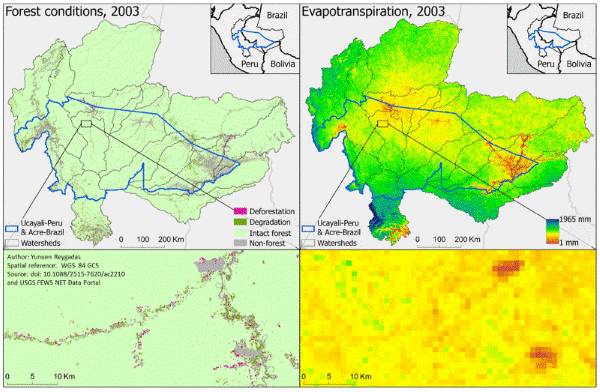
Tool under development: The service will launch a statistics-based tool that will allow users to analyze the tradeoffs between development activities and ecosystem services through scenario modeling.
The service: The service allows regional and local planners and decision-makers, as well as citizens of Acre and Ucayali (including the Indigenous and traditional communities of the Sierra del Divisor, Yurua, and Purus watersheds) to better understand the tradeoffs between development activities and ecosystem services. Changes in forest cover can be mapped and attributed to localized changes in evapotranspiration (ET), soil moisture, humidity, and surface temperature. Through this service, the effect-radius of these changes in forest cover can be determined to generate maps that highlight areas undergoing changes in microclimatology and land-use. These maps provide a baseline for future climate modeling analyses on the relationship between forest disturbance and regional climate change.
Partnerships: The team has maintained long standing relationships with several indigenous communities who live in the transboundary area. In a recent visit to local stakeholders, David Salisbury delivered analysis in paper map and poster formats to governmental offices, Indigenous organizations, and communities in Ucayali and Acre. The team discusses continuously progress in the implementation of the service with Brazilian State agencies (CPI-ACRE, SEMAPI Acre) and Universities. In Peru, the Regional government of Ucayali is involved in the service development.
In the news:
- Safeguard ecosystem services in the Southwestern Amazon, the motivation that drives Stephanie Spera’s Applied Science Team (Project description)
- Mapping forest disturbances across the Southwestern Amazon: tradeoffs between open-source, Landsat-based algorithms (Scientific publication)
- NASA 2021 Earth Science Week, presentation by S.Spera (video)



